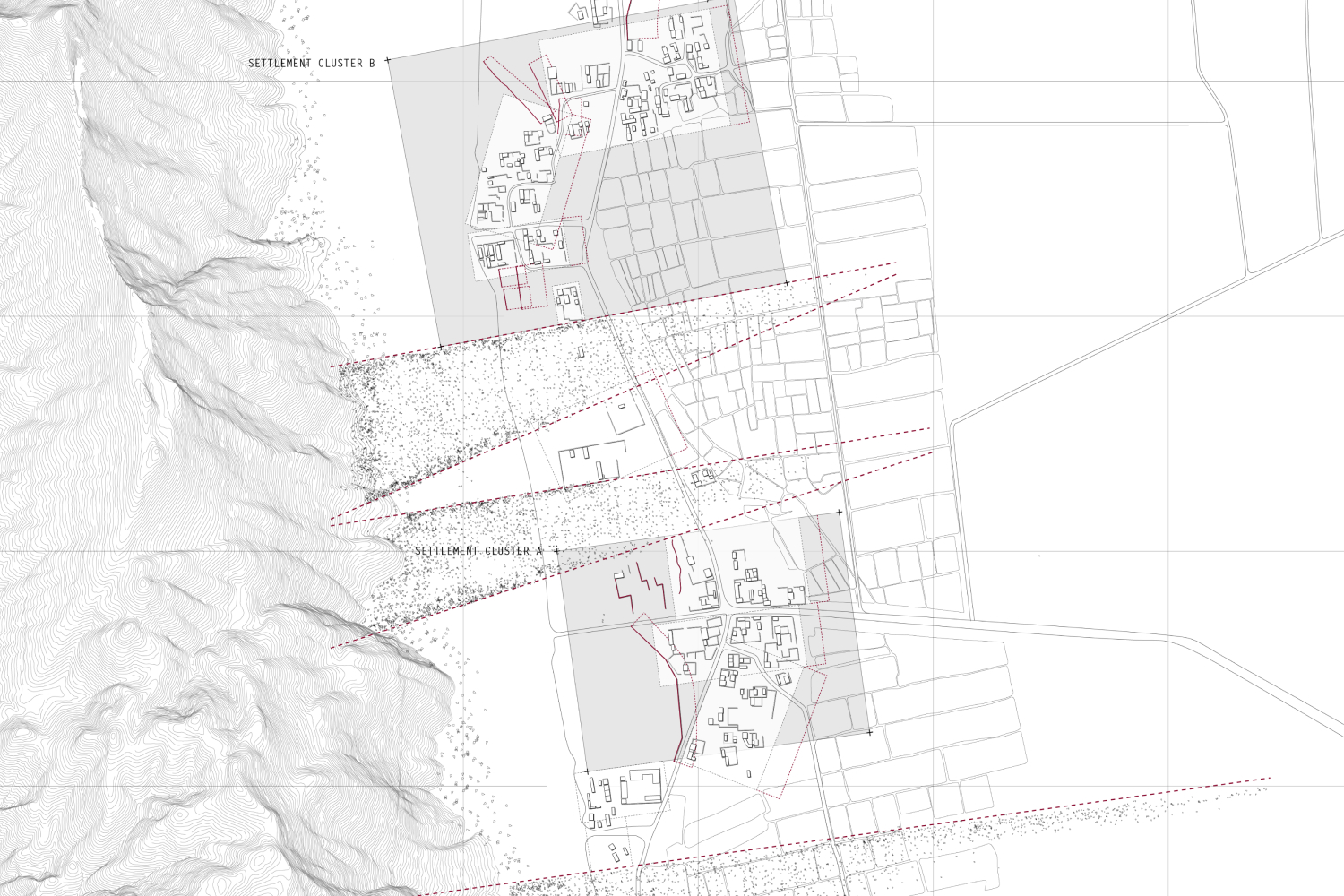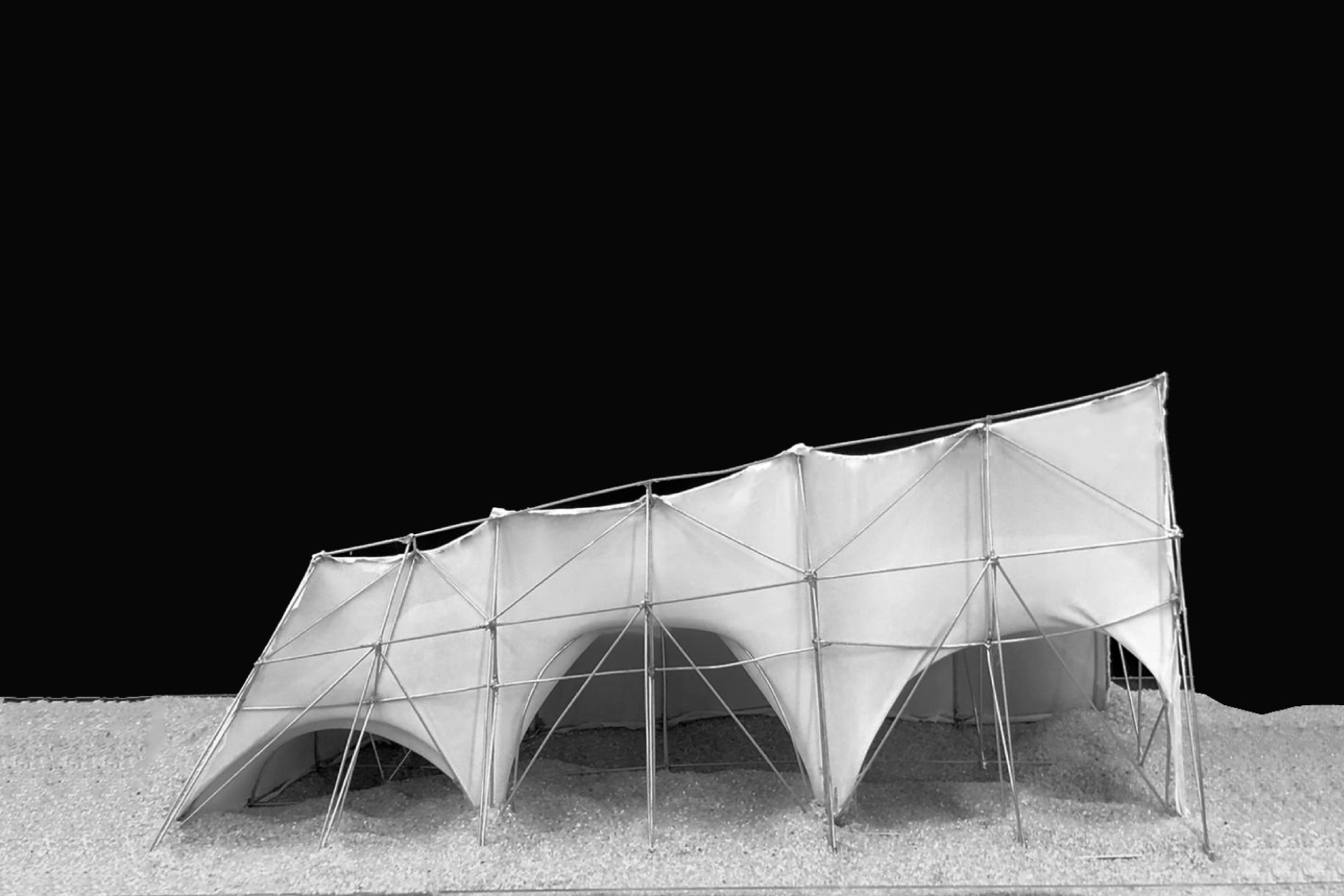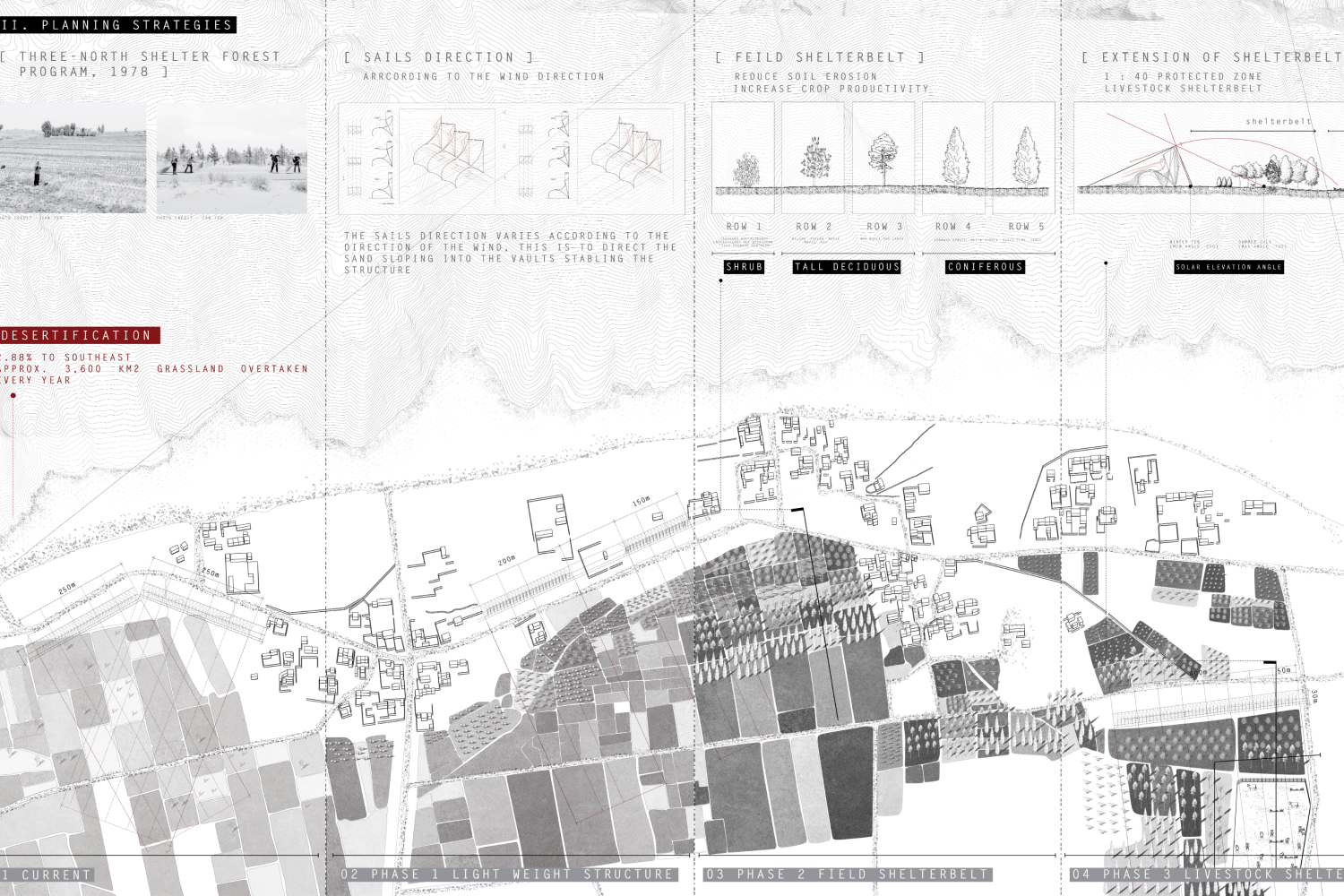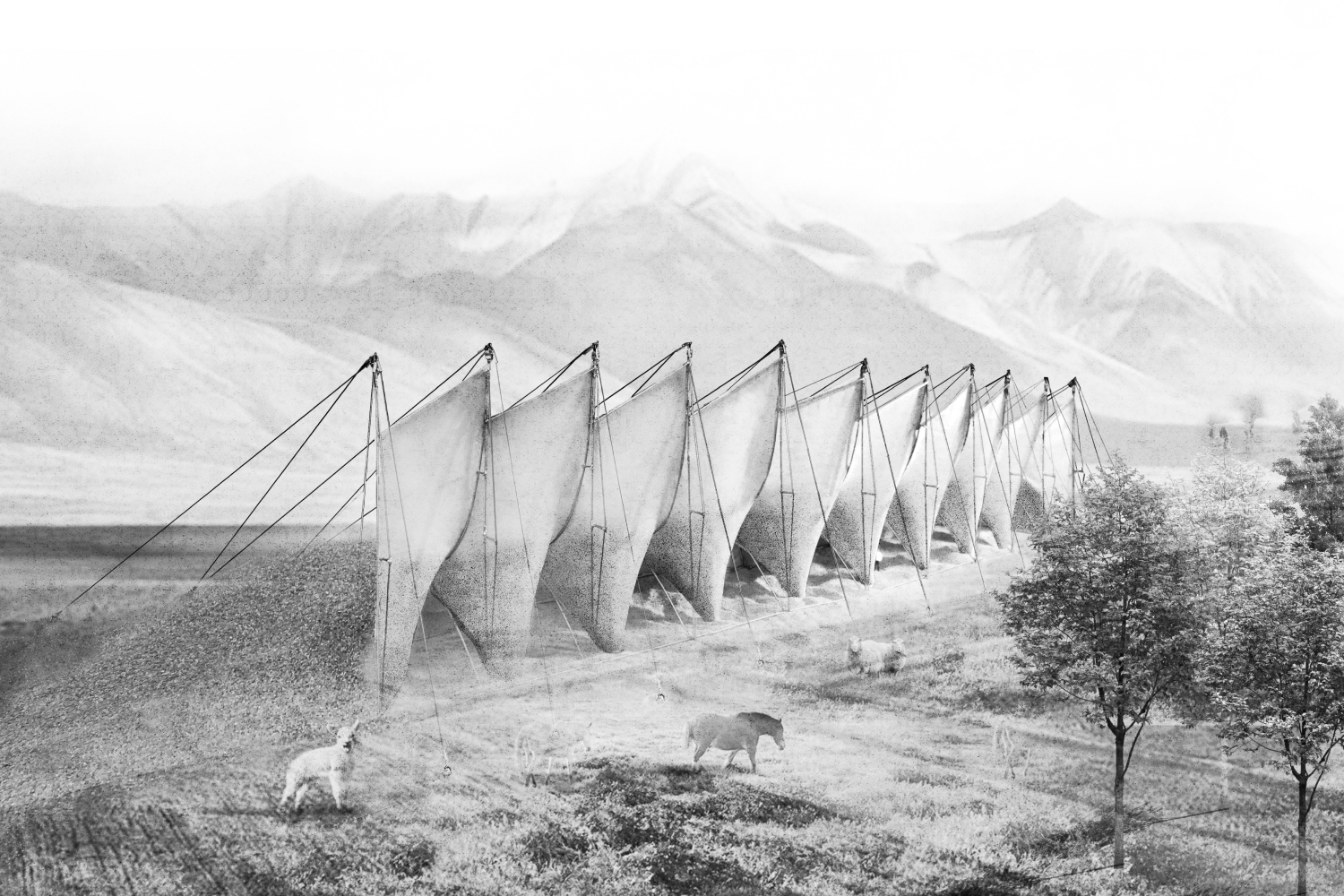This thesis speculates on the potential of resonance structure responsive to the dire desertification of Inner Mongolia, where deforestation, widespread mining, and human activities are constantly turning the once fertile lands into sandy plains. Through adopting the prevalence of sand material and natural wind forces, a built structure proposal is tested to heighten the intimate relationship with the immediate desert environment. The sand is captured and evolved into part of the structure over time, gradually formalising a green shelterbelt for settlement.
In the desert, the sand dune is a continuous landscape with undulating levels, which is formed by wind erosion. Humans have never truly utilised sand as a readily available material although, in the past decades, people have constantly explored the potential of the desert.
In the Middle East and Egypt in particular, the earth block is the main building material. Sand can also be classified as earth, where compacted sand structure layers such as sandbags provide certain thermal comfort to the interior. Sand is the richest material in the desert, it opens a design opportunity, as to whether it can perform as a primary building material that integrates with additional lightweight structures and provides stability and thermal comforts to the interior.
The project is defined by inexpensive and easily obtained materials together with the natural movement of sand – turning the energy of the desertification process into a means of halting its own expansion.





